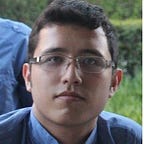Revolutionizing Computer Vision: How Facebook’s SAM Project is Redefining What’s Possible
Segmentation has long been recognized as one of the most critical challenges in the field of computer vision, as accurate segmentation is essential for a wide range of applications such as identifying cancer cells in medical images, segmenting street images for autonomous vehicles, and enhancing virtual and augmented reality technologies. Better segmentation algorithms lead to more precise and efficient image processing, which has significant implications for diverse fields like healthcare, transportation, and entertainment.
Over the years, the methods used to perform segmentation have evolved significantly. In the early days, sliding window techniques were used to identify objects in images. Later, models with an encoder-decoder style, such as U-Net, became popular. The introduction of fully convolutional networks (FCNs) revolutionized the field, and FCN-based models quickly became the state-of-the-art for segmentation.
In 2017, Facebook AI Research introduced Mask R-CNN, a combination of object detection and instance segmentation. Mask R-CNN was a major breakthrough in computer vision and helped pave the way for more complex segmentation models. Other models like YOLO, EfficientNet, and Vision Transformers have since revolutionized segmentation.
However, one of the main problems with current segmentation models is that they are generally not good at few-shot or zero-shot learning, making them dataset-dependent. As Facebook pours billions of dollars into the Metaverse project, its research team achieved a breakthrough with the Segment Anything or SAM model. This model is trained on the Segment Anything 1-Billion mask dataset (SA-1B), a massive dataset with over a billion masks on 10 million photos, and it can work as a promptable segmentor in other projects without requiring much data.
SAM has the potential to segment any image it recieves as prompt , and can label many typical objects as well .
the labeling is not ready yet ,though the developers promised it will be in the coming months .
Both the Segment Anything Model (SAM) and the Segment Anything 1-Billion mask dataset (SA-1B) have been released under the Apache 2 license and are free to use for education purposes. You can check out the demo here.
Overall, segmentation is an essential task in computer vision, and advancements in this field have the potential to significantly impact various industries. With continued research and development, we can expect even more breakthroughs in the future.
in the next post we will have a look at SAM in more detail and try to use it with python .
reference :
Join me on my journey and receive updates on my latest posts, make sure to hit that ‘Follow’ button. Thanks for reading!
